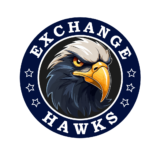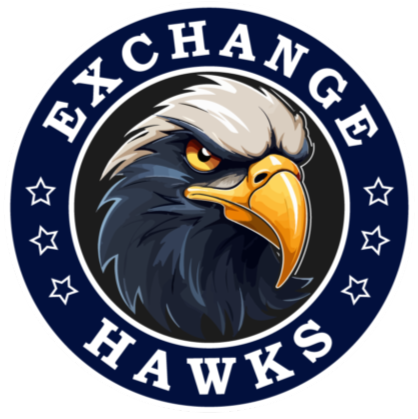The cryptocurrency market offers a variety of trading methods, each with its own characteristics and advantages. Understanding these different types of trading can help you choose the best strategy for your goals. This guide covers the most common types of crypto trading: spot trading, futures trading, leverage trading, and margin trading.
Table of Contents
Toggle
What is Spot Trading?
Spot trading is the most straightforward form of trading. It involves buying or selling cryptocurrencies for immediate delivery. This means that transactions are settled “on the spot,” with the crypto assets transferred directly to your wallet once the trade is executed.
Key Features of Spot Trading
- Immediate Settlement: Transactions are completed instantly, and assets are transferred to your account right away.
- Ownership: You own the cryptocurrency you purchase, allowing you to store it in your wallet or use it as you wish.
- Simplicity: Spot trading is easy to understand and execute, making it ideal for beginners.
Pros of Spot Trading
- Direct Ownership: Full control over your assets.
- Transparency: Simple process with no hidden complexities.
- Low Risk: No leverage involved, so there’s no risk of margin calls.
Cons of Spot Trading
- Limited Profit Potential: Profits are limited to the difference between the buying and selling price.
- No Hedging: Doesn’t provide tools for hedging against price drops. ‘Read more about Hedging’
What is Futures Trading?
Futures trading involves buying or selling cryptocurrency contracts that expire at a future date. These contracts are agreements to buy or sell a specific amount of cryptocurrency at a predetermined price.
Key Features of Futures Trading
- Contract-Based: Trades are based on contracts that settle at a future date.
- Leverage: Allows for higher exposure to the market with a smaller amount of capital.
- Speculation: Traders can profit from both rising and falling markets.
Pros of Futures Trading
- Leverage: Ability to control larger positions with a smaller investment.
- Hedging: Useful for managing risk and hedging against potential losses.
- Profit from Market Movements: Opportunity to profit from both upward and downward price movements.
Cons of Futures Trading
- Complexity: More complicated than spot trading, requiring a good understanding of the market.
- Higher Risk: Leverage increases the potential for significant losses.
- Expiration Dates: Contracts have expiration dates, adding another layer of complexity.
What is Leverage Trading?
Leverage trading allows traders to borrow funds to increase their exposure to the cryptocurrency market. This means you can control a larger position than your actual investment by using borrowed funds.
Key Features of Leverage Trading
- Amplified Exposure: Leverage amplifies both potential profits and losses.
- Margin Requirements: Traders must maintain a margin, which is a fraction of the total trade value.
- Borrowing: Funds are borrowed from the exchange or other traders.
Pros of Leverage Trading
- Increased Profit Potential: Ability to earn larger profits with a smaller initial investment.
- Flexibility: Access to larger positions without needing the full amount upfront.
Cons of Leverage Trading
- High Risk: Potential for significant losses if the market moves against your position.
- Margin Calls: If your account balance falls below the required margin level, you may face a margin call, requiring additional funds to maintain your position. Read more about Margin Calls
To read or full blog on Leverage Trading click here:
What is Margin Trading?
Margin trading is similar to leverage trading but specifically refers to trading on margin accounts. This involves borrowing funds from the exchange to increase your trading position.
Key Features of Margin Trading
- Borrowed Funds: Traders borrow money to trade more than their initial capital.
- Interest: Interest is charged on the borrowed amount.
- Minimum margin level: Traders must maintain a minimum margin level to keep their positions open.
Pros of Margin Trading
- Enhanced Profit Opportunities: Potential for higher returns by using borrowed funds.
- Access to Larger Positions: Ability to control more substantial positions than with your own capital alone.
Cons of Margin Trading
- Increased Risk: High risk due to the potential for amplified losses.
- Interest Costs: Additional costs associated with borrowing funds.
- Margin Calls: Risk of forced liquidation if the position value drops significantly. Read more about Margin Calls
Which Type of Trading is Right for You?
Choosing the right type of trading depends on your experience, risk tolerance, and trading goals:
- Spot Trading is ideal for beginners or those who prefer simplicity and direct ownership.
- Futures Trading is suitable for more experienced traders looking to speculate on price movements with the potential for higher profits and hedging.
- Leverage Trading is best for traders with a high-risk tolerance and the knowledge to manage leveraged positions effectively.
- Margin Trading offers the ability to amplify positions but comes with higher risks and costs associated with borrowing.
Conclusion
All different trading types in crypto offer unique opportunities and risks. Understanding these types can help you make informed decisions and choose the strategy that best aligns with your trading objectives.
For those interested in exploring these trading options, many reputable exchanges offer various trading features and tools. Click here for the best exchanges and heck out different platforms and consider factors like fees, security, and available trading pairs to find the one that suits your needs.
Happy trading!
Thanks for reading! This blog is part of the ExchangeHawks Knowledge Base:
Click HERE to learn more about crypto trading and exchanges!

